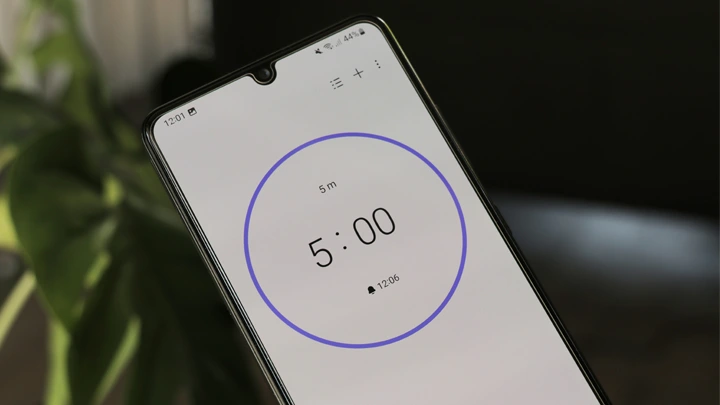
When people hear the term “patent agent,” they often imagine someone buried under heaps of paperwork, deciphering endless streams of legal jargon. However, the reality is far more vibrant and dynamic, especially here at Henry Goh, where I have been navigating the fascinating world of intellectual property for over 18 years. Allow me to give you a glimpse into a typical day in my life as a Malaysian patent agent.
Morning Routine: The Calm Before the Storm
My day kicks off with a strong cup of iced coffee, which serves as my morning tonic at 8:00 AM. This is an incredibly important step to start every morning on the right foot. As I sip my coffee, I quickly scan through my work emails, prioritizing tasks and setting the tone for the day. Between 8:30 AM and 9:30 AM, I focus on filing new patent applications. By 9:30 AM, I delve into more substantive matters, such as reviewing Adverse Reports and crafting Responses to Written Opinions. Each document presents a unique puzzle, requiring meticulous analysis and strategic thinking. I find it engaging to dissect objections and formulate persuasive arguments to address the objections raised by Examiners.
Mid-Morning: Diving into the Details
Around 11:00 AM, I shift gears to the prosecution of patent applications. This involves liaising with clients and Patent Examiners to ensure each application meets the stringent requirements of the Malaysian patent system. This also extends to dealing with the prosecution of overseas patent applications to meet the requirements of their respective countries’ patent practices. It is a delicate balancing act between advocating for my clients and adhering to regulatory standards. The pandemic has made virtual meetings the norm, and I have come to appreciate the efficiency of quick, face-to-face discussions online compared to the often impersonal nature of email.
Lunchtime: A Brief Respite
Lunchtime offers a welcome break. I usually spend it catching up with colleagues, exchanging insights, and sharing a few laughs. These interactions are invaluable, providing a much-needed mental break. If time permits, I indulge in a quick 10 to 15-minute power nap, which works wonders in keeping me refreshed. I typically take a light lunch which helps me to maintain my energy levels throughout the afternoon.
Afternoon: Tackling Complex Challenges
The afternoon is reserved for tackling the more complex aspects of my role. This includes conducting Freedom-to-Operate (FTO) searches, preparing Infringement and Validity Opinions, and drafting patent specifications for new applications. Each task demands a deep understanding of both the technical and legal dimensions of patents. While challenging, it is precisely this complexity that makes my job so exciting and fulfilling.
Freedom-to-Operate Searches
For example, imagine a client developing a groundbreaking new solar panel technology. Before they can bring their product to market, they need to ensure that their innovation does not infringe on existing patents. Conducting an FTO search involves reading and analyzing numerous patents and publications to identify any potential conflicts. This meticulous process ensures that the client’s product can be launched without the risk of costly litigation.
Infringement and Validity Opinions
Similarly, preparing Infringement and Validity Opinions is a task that requires both legal acumen and technical expertise. Let’s say a company believes that a competitor is infringing on their patented method of manufacturing biodegradable plastics. I would thoroughly review and analyze both the client’s and the competitor’s patents, scrutinizing each claim to determine whether an infringement has occurred. Conversely, if a client’s patent is being challenged, I would evaluate the validity of their patent against prior art to defend its novelty and inventive step.
Drafting Patent Specifications
Drafting patent specifications is another intricate task that fills my afternoons. For instance, consider an engineer who has invented a revolutionary new type of automated assembly line robot designed to increase efficiency in manufacturing. The challenge lies in meticulously describing the robot’s unique features—such as its innovative adaptive gripping system, advanced sensor integration, and the novel algorithms it uses to optimize production.
To ensure comprehensive protection, the patent specification must not only detail how these features work but also explain how they differ from existing robotic systems and cover all possible variations of the invention. This involves crafting a thorough and precise document that can withstand rigorous examination by Patent Offices and provide robust protection against potential infringement. A well-drafted patent specification helps secure the client’s intellectual property and safeguards their competitive edge in the manufacturing industry.
Evening: Wrapping Up and Reflecting
As the day winds down, I take a moment to review what I have accomplished and plan for the next day. The most rewarding part of my role is seeing a patent application through to approval or grant, knowing that I have played a part in protecting someone’s innovation.
The Highs and Lows
The most thrilling aspect of being a patent agent is the diversity of innovations I encounter. From groundbreaking mechanical devices to cutting-edge engineering solutions, each day brings something new. However, the pressure of tight deadlines and the need for precision can be stressful. One mistake can have significant repercussions, leaving little room for error. Thankfully, our firm’s powerful, in-house software helps us stay on top of all deadlines, facilitating a seamless hybrid work arrangement. This software is pivotal in our goal to go fully paperless.
Keys to Success
A successful patent practitioner must be detail-oriented, resilient, and a keen problem solver. Staying updated with the ever-evolving landscape of intellectual property law and approaching each case with fresh eyes and an open mind are essential.
Myths about IP Protection
There are several myths about intellectual property (IP) protection that often mislead individuals and businesses. One common myth is that IP protection is only necessary for large corporations. In reality, IP protection is crucial for businesses of all sizes, from startups to established companies and big corporations. Patents, trademarks, industrial designs, and copyrights can provide a competitive edge and safeguard innovations across any industry.
Another myth is that obtaining IP protection is prohibitively expensive. While there are costs involved, the long-term benefits and returns of protecting your IP assets far outweigh the initial investment. Proper IP protection can prevent competitors from copying your innovations, enhance the value of your business, and open up new revenue streams through licensing and partnerships.
Frequently Asked Questions about Patent Agents and IP Practice
1. What does a patent agent do?
A patent agent assists inventors and businesses in obtaining patents for their inventions. This involves drafting and filing patent applications, prosecuting patents, and providing legal advice on patentability, infringement, and validity.
2. What qualifications are needed to become a patent agent?
In Malaysia, a patent agent typically holds a degree in engineering or science or law and must pass the qualifying examination set by the Intellectual Property Corporation of Malaysia (MyIPO). Additionally, practical experience and a deep understanding of patent law are essential.
3. Why should you hire a patent agent?
Hiring a patent agent ensures that your patent application is prepared and prosecuted professionally, increasing the likelihood of a successful outcome. Patent agents possess the technical expertise and legal knowledge necessary to navigate the complex patenting process. Crafting a patent application is like preparing for a grand chess match. Every move must be calculated, strategic, and precise. Patent agents excel in this realm, formulating persuasive arguments to counter objections and ensuring that every aspect of your invention is meticulously covered. Their goal is to secure the broadest protection possible for your innovation, safeguarding it from potential infringers.
4 .What can be protected?
Patents can protect a wide range of inventions, provided they meet certain criteria. Here are some examples:
Mechanical Devices: If you invent a new type of machinery or tool, such as a more efficient engine or an innovative household appliance, it can be patented.
Chemical Compounds: New pharmaceuticals, industrial chemicals, and unique chemical compositions used in manufacturing processes are often protected by patents.
Processes: Innovative methods for doing something, such as a new technique for manufacturing a product or a novel way of processing data in a computer system, can be patented.
Biotechnology: Advances in genetic engineering, new medical treatments, and innovative agricultural technologies are examples of biotechnological inventions that can be patented.
By securing patent protection for these inventions, inventors can prevent others from making, using, or selling their innovations without permission, thereby safeguarding their intellectual property and promoting further innovation.
Challenges Faced as a Patent Agent
Being a patent agent comes with its own set of challenges. One significant challenge is staying updated with the ever-evolving landscape of intellectual property law globally. Patent laws and regulations are constantly changing, requiring continuous learning and adaptation.
Another challenge is managing tight deadlines. Patent agents must adhere to strict timelines for filing applications, responding to office actions, and maintaining patents. Missing a deadline can have serious consequences, potentially leading to the loss of patent rights.
The need for precision and attention to detail is another major challenge. For instance, patent applications must be meticulously drafted to ensure that the invention is adequately described and claimed. If a patent for a new type of battery technology lacks detailed descriptions of its unique chemical composition, competitors could exploit this ambiguity and overly broad claims to create similar products without infringing on the patent. Similarly, if an application for a novel medical device fails to clearly outline its innovative mechanism, it might be rejected by the Patent Office for insufficient disclosure. Such errors or ambiguities can undermine the protection of your invention, highlighting the critical importance of thorough and precise patent drafting.
Additionally, balancing the interests of clients and Patent Examiners can be challenging. Patent agents must advocate for their clients while ensuring that the application meets all legal requirements. This often involves complex negotiations and strategic thinking.
Despite these challenges, the rewards of being a patent agent are immense. The opportunity to work with innovative inventors, contribute to technological advancements, and protect valuable intellectual property makes this profession incredibly fulfilling.
Sources of Inspiration
My inspiration comes from the inventors and creators I work with. Their passion and ingenuity drive me to do my best work. If I were not in IP, I would likely still be in engineering, exploring new ways to solve problems and innovate or maybe, a brilliant “wannabe” badminton player. But, that is a long story for another day.
My Motto
My motto in life is simple: “Attention to detail and perseverance lead to success.” This guiding principle has served me well throughout my career, helping me navigate the complexities of intellectual property law and achieve the best outcomes for my clients.
In conclusion, being a patent agent is a demanding yet incredibly rewarding profession. It combines technical knowledge, legal expertise, and strategic thinking in a way that few other careers do. Each day presents new challenges and opportunities, making it a truly dynamic and fulfilling role.



